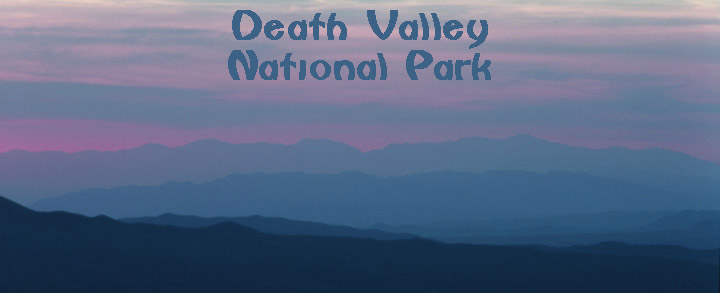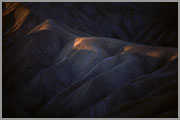
| Zabriski Point.
This is one of the most photographed spots in Death Valley. Almost every
morning, there can be several dozen people waiting for the first rays of
the rising sun.
|
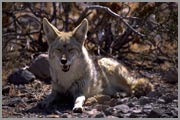
| Friendly Coyote.
This fellow seemed quite tame. I think they get used to gathering food
scraps from the tourists - he didn't get any from me.
|
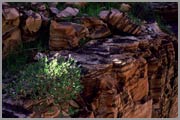
| Colourful Rocks.
Death Valley can be a geologist's delight. There are many different types
of rocks and minerals - over the years, the area has been mined for borax,
talc, lead, and gold.
|
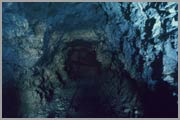
| Mining.
This is the entrance into one of the old mines that I came across. One
has to be very careful inside these - they're very dark, and there are
open vertical mineshafts that can drop for a very long distance.
|
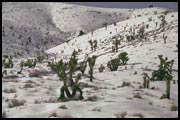
| Snow in Death Valley?
Although summer temperatures can reach to 120F, winter time is a bit
cooler. At the higher elevations, there can actually be significant
amounts of snow. These joshua trees are quite tough and survive very
well.
|
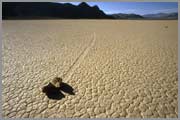
| The Racetrack.
This dry lake bed is referred to as the racetrack. The name comes from
these rocks that move across the lake bed and leave these long tracks - I
guess someone thought the rocks were racing each other. A combination of
wind and a frozen surface allegedly account for the movement. I personally
think it has something to do with Martians.
|
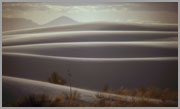
| Sand Dunes.
There are a number of sand dunes in and near Death Valley. These dunes,
near Stovepipe Wells, are the ones that most people see. They are fairly
extensive, but not particularly high. The Eureka dunes, at 700 ft, are
much more impressive, but few people see them, due to many miles of
intervening torturous road. The Panamint dunes require a long walk
across hot desert to reach them. There are many smaller dune systems,
but these require back country exploring to find.
|
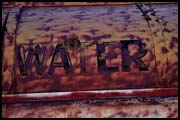
| Water.
In Death Valley, water is life. Currently, surface water is quite scarce.
Ironically, thousands of years ago, Lake Manly filled Death Valley to a
depth of 600 ft.
|
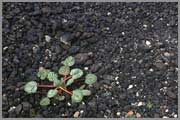
| Ubehebe Crater.
There was some considerable volcanic activity at the north end of
Death Valley a few thousand years ago. There is currently a large
crater at the site. There are actually plants growing out of the
volcanic rubble.
|
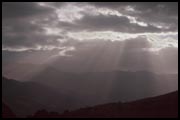
| God Rays.
Courtesy of openings in the clouds, air borne dust and Los Angeles smog.
This is on an old mining road that heads toward the Saline Valley.
|










